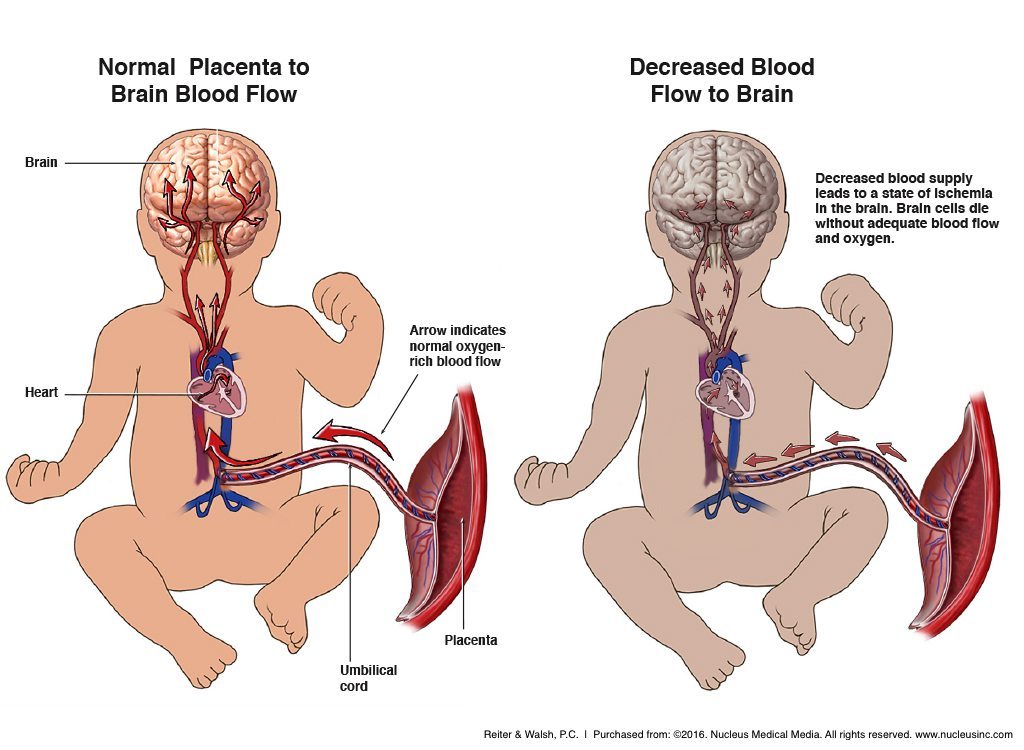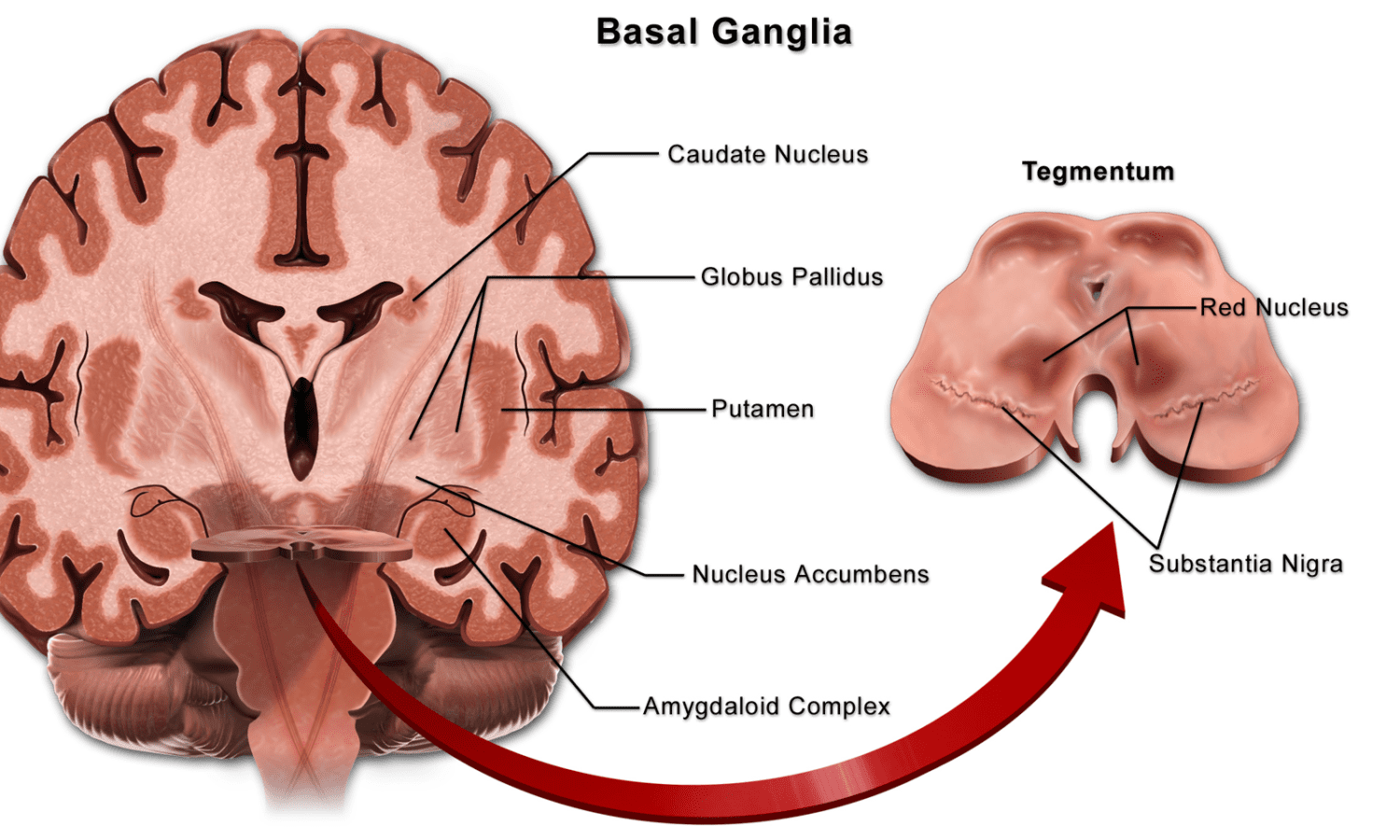Basal Ganglia, Thalamus, and Globus Pallidus Brain Injury
As a parent, learning that your baby was diagnosed with a brain injury from birth can be devastating. The brain is responsible for our everyday functions, especially certain brain structures like the basal ganglia and thalamus. You might wonder how the brain injury will affect them as they grow and what the severity of their impairment will look like. You may also question what led to your baby’s injury.
If your baby was diagnosed with a basal ganglia, thalamus, or globus pallidus brain injury, they may have serious permanent disabilities as a result.
Was your baby diagnosed with a brain injury?
Our staff is here to listen attentively and answer your questions.
What is a basal ganglia brain injury?
The brain is made up of different structures that each perform a specific task. The basal ganglia, which is located in the center of the brain, is a group of structures that are responsible for our motor function, or movement. The basal ganglia connects to different parts of our brains and sends signals through them that control our muscle movements. The globus pallidus is a major component of the basal ganglia and is involved in the regulation of voluntary movement. If your baby has a brain injury that affects the basal ganglia or globus pallidus, they may have a motor control disorder as a result.
What is a thalamus brain injury?
The thalamus is another structure located in the center of the brain. It is responsible for processing and sending signals for sensory and motor information. However, it also plays a part in our thinking, memory, focus, and consciousness. If your baby’s brain injury involves damage to the thalamus, they may develop permanent physical disability and/or mental difficulties or learning disabilities.
What causes basal ganglia and thalamus brain injury?
A common cause of brain injury in babies is a lack of oxygen to the brain, called birth asphyxia, or hypoxic-ischemic encephalopathy (HIE). Birth asphyxia occurs at or around the time of birth when something affects the amount of oxygen that the baby receives. When the baby is in the womb, it receives all of its oxygen from the mother. This oxygen travels through blood vessels that connect between the uterus and placenta. The blood then travels to the baby through the umbilical cord. Anything that stops or slows down this flow of oxygen-rich blood can cause birth asphyxia and result in an HIE diagnosis.
The long-term effects of birth asphyxia and HIE are serious and can include motor disorders like cerebral palsy, intellectual and developmental disabilities, and other serious lifelong conditions. These serious conditions can be associated with basal ganglia, thalami, and globus pallidus injury.

Causes of Birth Asphyxia And Brain Injury
Birth asphyxia is usually caused by a problem with the uterus, placenta, or umbilical cord. Severe asphyxia and HIE often cause injury to the basal ganglia, globus pallidus, thalamus, and brain stem.
Common causes of birth asphyxia & hypoxic-ischemic encephalopathy (HIE) include:
- Failure to quickly deliver a baby in the presence of oxygen deprivation (delayed emergency C-section)
- Umbilical cord problems, such as a nuchal cord (cord wrapped around baby’s neck), umbilical cord prolapse, short umbilical cord, and cord in a true knot
- Ruptured uterus
- Placental abruption (placenta separates from uterine wall (womb))
- Preeclampsia / eclampsia
- Placenta previa
- Oligohydramnios (low amniotic fluid)
- Premature rupture of the membranes (PROM) / premature birth
- Prolonged and arrested labor
- Uterine tachysystole caused by Pitocin and Cytotec
- Fetal stroke
- Postmaturity syndrome
Even if you didn’t face one of these complications, you may still have the right to pursue a legal claim for your baby’s injuries. Unfortunately, birth asphyxia can be caused by many different or coinciding conditions and complications. These are a few common examples, and are not meant to be a complete list.
Did any complications occur during your labor?
If your baby suffered birth asphyxia from labor or delivery complications, contact us to discover whether your baby’s injury could have been prevented.
During labor and delivery, the baby is supposed to be closely monitored with a fetal heart rate monitor. If a baby becomes oxygen-deprived, it will be reflected on the fetal heart monitor as nonreassuring heart tracings. When nonreassuring tracings occur, the medical team must quickly deliver the baby to get him or her out of the oxygen depriving conditions. Failure to quickly deliver a baby experiencing birth asphyxia can cause brain damage in important structures such as the basal ganglia, globus pallidus, thalamus, and cerebral cortex.
Birth asphyxia and HIE can cause permanent brain damage, leaving children with long-term conditions such as:
Deep Brain Injury And Motor Dysfunction
When a baby experiences severe asphyxia during birth and is diagnosed with HIE, parents are often told that their child has basal ganglia, thalamus, globus pallidus, or sensorimotor cortex injury. These “deep” brain structures and types of brain injury involve the gray matter of the brain. Gray matter is brain tissue responsible for normal, everyday functions.

The basal ganglia are gray matter structures that are located just underneath the cerebral cortex, on both sides of the thalamus. These structures play a central role in motor function (movement), and when they’re damaged, the child can have a wide variety of motor disorders, such as cerebral palsy.
Cerebral Palsy Caused By Brain Injury
Cerebral palsy (CP) is a group of motor disorders often caused by damage to the motor centers of the brain, such as the basal ganglia, thalamus, and globus pallidus. Children with cerebral palsy have certain limitations in motor function, and some of them may also experience other serious conditions, such as seizures.
Dyskinetic/Athetoid Cerebral Palsy and Basal Ganglia Injury
Damage to the basal ganglia and globus pallidus affects the brain’s ability to control muscle movement and coordination. This type of injury is associated with dyskinetic or athetoid cerebral palsy, which causes involuntary movements. According to the Cleveland Clinic, athetoid cerebral palsy is “the second most common type of cerebral palsy.”
It is also associated with brain damage caused by kernicterus. When a baby has elevated bilirubin levels (jaundice) for too long, the bilirubin can enter the brain and cause a form of brain damage called kernicterus. Bilirubin is toxic to the brain. When kernicterus occurs, although other areas can sustain injury, there is often bilateral globus pallidus injury, which means that both parts of the globus pallidus show damage. In turn, this globus pallidus injury can lead to athetoid cerebral palsy.
Brain Injury and Medical Malpractice
Unfortunately, hospitals do make mistakes that can lead to a baby suffering from birth asphyxia and other serious conditions as outlined above. If these errors are preventable and they end up permanently injuring or disabling a child, it is considered medical malpractice. If your child suffered from a preventable brain injury that involved the basal ganglia, thalamus, globus pallidus, or other critical areas, it is worth discovering whether their injury was created by a medical error.
If you believe your medical providers acted negligently during your labor or delivery, it can be overwhelming to consider pursuing a lawsuit after what you endured. Parenting a child with special needs can be a full-time job, and overcoming any trauma from birth can also be emotionally taxing. A dedicated birth injury lawyer can take the burden off your shoulders and help you receive the compensation you need to properly care for your child.
The benefits of a successful birth injury case can include:
- Recovering financial compensation to use towards your child’s special care needs
- Seeking complementary and alternative therapies for your child
- Securing adaptive equipment for your child to use for more independence
- Knowing your child will have finances and care even after you are gone
- Having a support team that can answer your questions about birth injury
- Finding new opportunities to support and advocate for your child
This by no means a complete list – each family is different and has different needs. It’s important to know what your legal options are so you feel empowered to make the best decision for your child.


Legal Help for Basal Ganglia, Thalamus, and Globus Pallidus Brain Injury
If your child has basal ganglia, globus pallidus, or thalamus brain injury and was diagnosed with cerebral palsy, a seizure disorder, or hypoxic-ischemic encephalopathy (HIE), it’s important to know that you’re not alone, and you may have legal options. We know that your child is your number one priority, which is why our firm has exclusively focused on this type of law to bring justice for children like yours. Parents put their trust in their medical team to safely and timely deliver their baby, and it can be devastating to find that trust was not honored by your care team. Fortunately, a legal case can help gain compensation to take care of your child’s special needs for a lifetime.
It’s very important to choose a firm that focuses solely on birth injury cases. ABC Law Centers: Birth Injury Lawyers is a national birth injury law firm that has been helping children with birth injuries since its inception in 1997. We have helped children throughout the country obtain compensation for lifelong treatment, therapy and a secure future, and we give personal attention to each child and family we represent.
Our nationally recognized birth injury law firm has achieved numerous successful multi-million dollar verdicts and settlements, and no fees are ever paid to our firm unless we win your case. We know you’re busy, which is why our team is available 24/7 to speak with you at your convenience.
Featured Videos
Posterior Position
Hypoxic-Ischemic Encephalopathy (HIE)

Featured Testimonial
What Our
Clients Say…
After the traumatic birth of my son, I was left confused, afraid, and seeking answers. We needed someone we could trust and depend on. ABC Law Centers: Birth Injury Lawyers was just that.
- Michael


